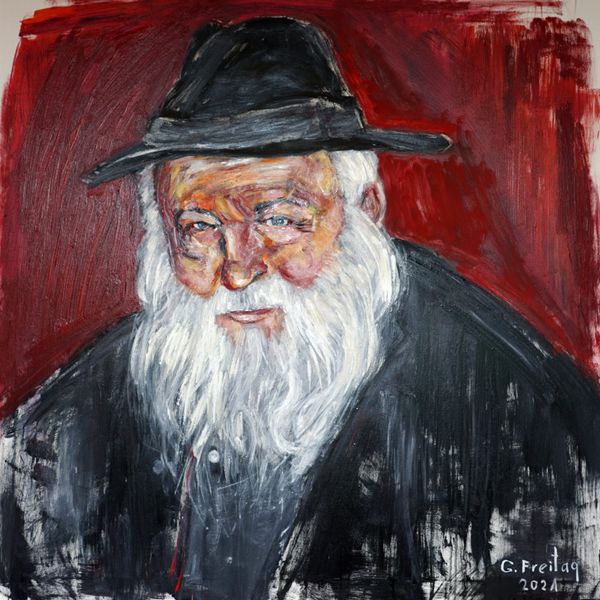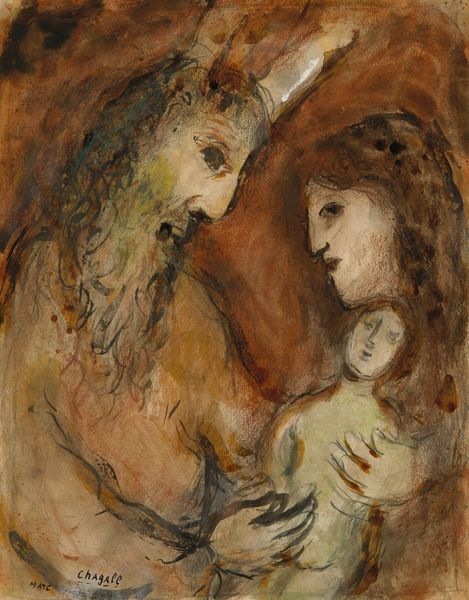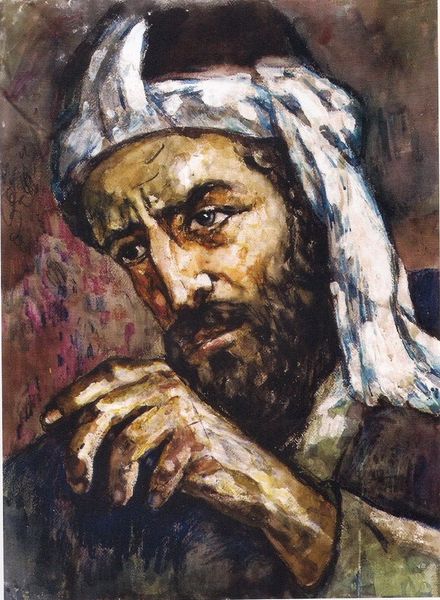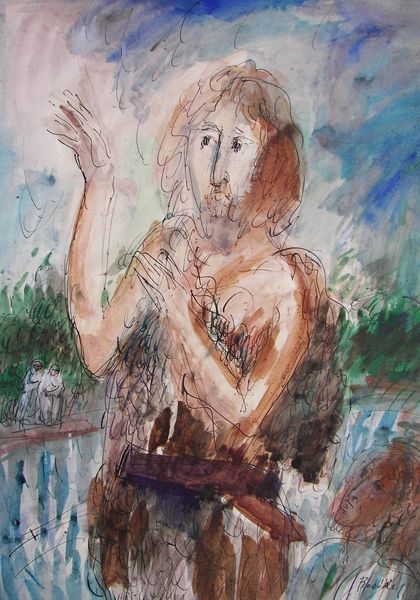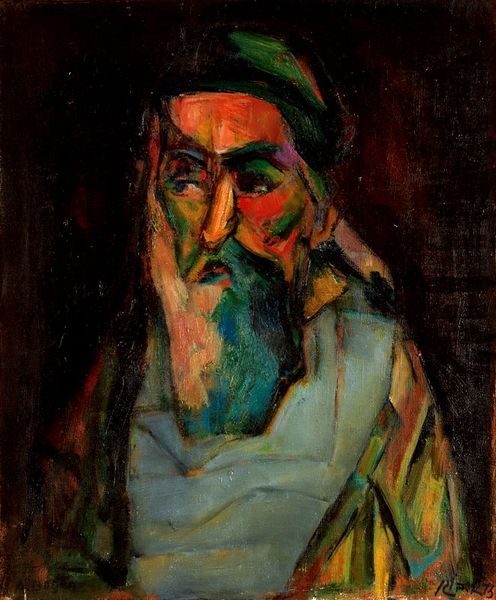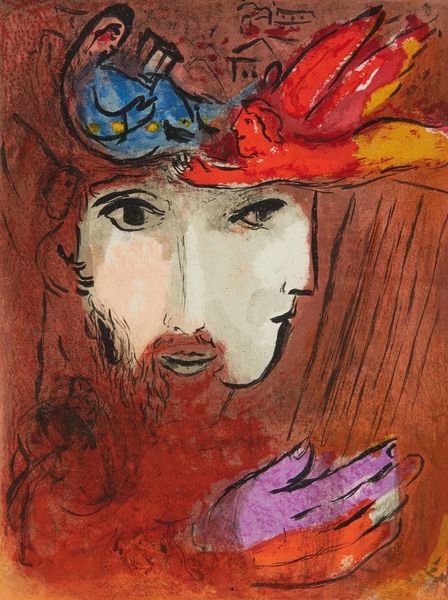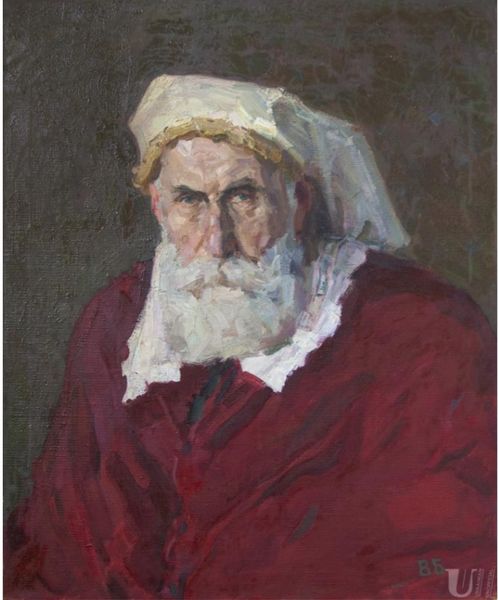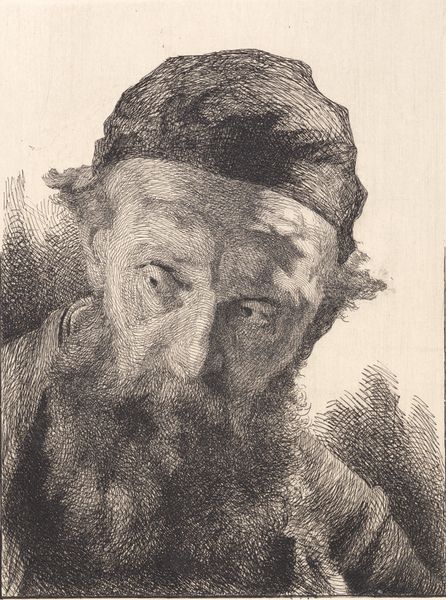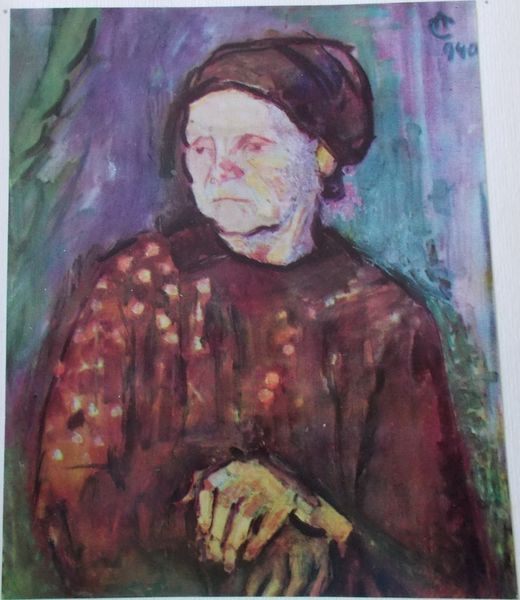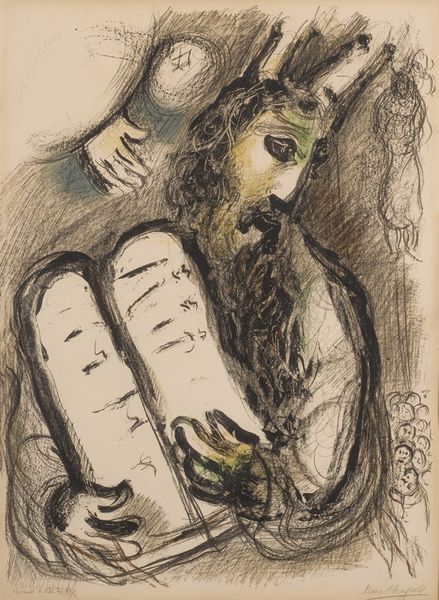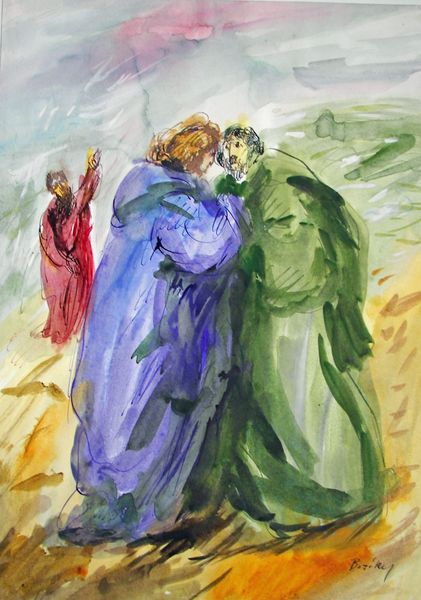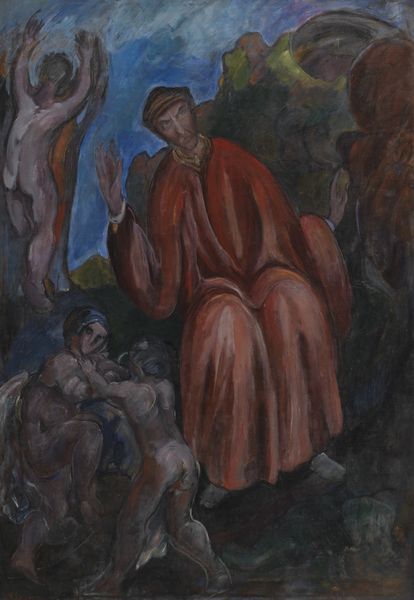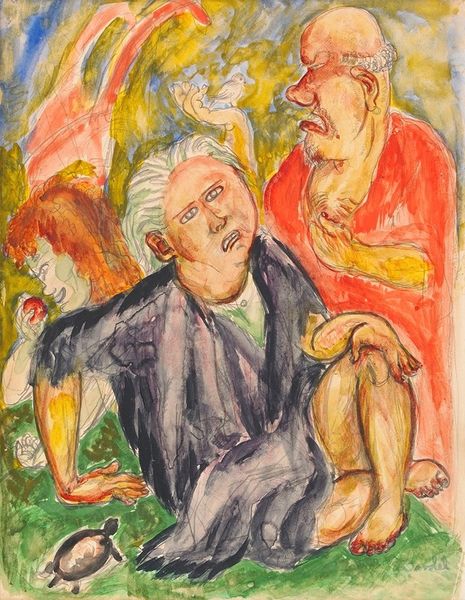
#
abstract painting
#
canvas painting
#
possibly oil pastel
#
oil painting
#
fluid art
#
acrylic on canvas
#
underpainting
#
painting painterly
#
animal drawing portrait
#
watercolor
Dimensions: 34 x 25 cm
Copyright: Maria Bozoky,Fair Use
Curator: The first thing I notice is the immediacy of the strokes; there's an almost frenetic energy conveyed through what appears to be watercolor. Editor: Indeed. What we are looking at is Maria Bozoky’s "Vörösmarty: Csongor and Tünde," from 1995. It's likely done with watercolor or possibly oil pastel on canvas, a piece filled with a raw expressiveness. Given its date, let’s think about artistic production within post-socialist Hungary. Curator: Setting aside that political context for a moment—because I can’t ignore the making. There's something fascinating in how she blends a fluid medium with a portrait, a drawing, painterly, as some might say, achieving a fascinating tension. How do you think she subverts the expectations within those painted forms? Editor: The "how" has a "why." Bozoky emerged as an artist amid significant institutional shifts. Post-1989 Hungary saw the art world re-negotiating its relationship with state funding and Western markets. Artists grappled with redefining national identity within an expanded Europe. What purpose might this approach to figuration play, in this specific socio-political environment? Curator: Fascinating perspective! Considering how resources might shape artistic practice is essential. Now, what intrigues me is how Bozoky manipulates paint quality. Look at that orange beard, juxtaposed with quick strokes. Did it become a political choice in order to make an art production in that timeframe? Editor: To what extent do galleries and museums contextualize or perhaps misrepresent such pieces today? The question goes back to how we construct a narrative around national identity, in times when old symbols have become replaced with new images in public collections. Curator: A fair point. Let’s just say I leave with questions regarding materiality, specifically, whether this artwork invites conversations around accessibility. Editor: Absolutely. It gives us more reason to reconsider how these histories manifest on canvas and enter our institutional collections.
Comments
No comments
Be the first to comment and join the conversation on the ultimate creative platform.
